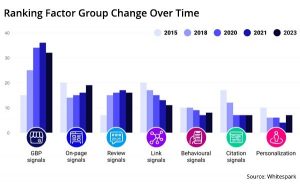Columnist Jose Cebrian believes it’s time to think of customer data as an “audience” instead of a “list,” but it will require meaningful measurement of that data and navigation of a multitude of tools.

As marketing evolves, it’s imperative that business leaders and marketers constantly assess their approaches and rethink their customer and prospect engagement strategies. I often write about customer data as corporate assets, but the language, tools and activities around customer data are changing.
Shifting from lists to audiences
Companies that are on a path toward marketing transformation need to be able to build personalized experiences based on real-time data in every channel. Some even want to monetize their audiences by selling access to them (or by not having to pay others for data on their customers).
One of the big paradigm shifts is the idea of thinking of customer data as an “audience” versus a “list.” Depending on your viewpoint, one could consider the two to be the same, but they are not. Yes, they comprise the same people, but the way they are organized, treated and managed is fundamentally different.
A common scenario in a list-focused company would include email lists that are different from social lists, which are different from SMS (Short Message Service) and direct mail lists. And often, customer data are separated from prospect data (sometimes for legal reasons).
In many cases, loyalty and customer data are also separated from each other, even though loyalty is basically a subset of customer lists. These companies have drawn little or no connection between known (personally identifiable information, or PII) and cookie/device data as found in web visits and display. In a large company with multiple brands or divisions, this situation can be multiplied, with dire consequences.
In an audience-focused company, these data all come together into a single location in a privacy-compliant way. Similar to a marketing database, this audience hub has all of your customer data in a single place, so people can be modeled for segmentation, scored for offers, hold-outs and so on, collectively, from different audiences.
The audiences are then pushed out to the platforms and teams that need them to do their work, whether it is to the data management platform (DMP) for onboarding, a marketing cloud for digital execution, a decisioning platform or customer service. And information about the marketing activities comes back in various amounts, depending upon the channel. Sales data and other customer interactions get loaded into the audience hub.
Governance becomes even more important
Data is generated and used at every different touch point in a customer journey. But one can’t just throw all the data into a database and call it an audience.
Disparate data on the same person need to be matched to that individual, including permission and preference data. Different sources may have varying views of the same person. Those views need to be rationalized, and a master source must be chosen.
If there are multiple brands or divisions that have a view of the same person and want to reach that individual, rules need to be created for access and usage of the record. Does the division that sourced the customer have more “ownership” of that record than another? What are those rules? If a person opts out of the second division’s marketing, does that mean the original division can’t market to the person in that channel? All of these issues need to be worked out.
Measurement requires some adjustment
You can’t optimize what you can’t measure. Accurate and meaningful measurement is essential to understanding where to invest and where to cut.
Online, single-channel marketing with a web-based metric (e.g., e-commerce sales) is easy enough, especially when last-click attribution is used. But when you start to look at the customer experience as a journey with multiple touches, some of which may not be attributable at the individual level (e.g., addressable social or addressable display impressions), you realize that you have to change the way you measure.
Lift needs to be examined beyond the channel level to focus more on the journey or budget level. Match rates going from PII to anonymous need to be factored into the equation.
And hold-outs of the same types of people under the same or very similar circumstances and journeys need to be compared to identify lift. If you don’t have impression-level data on an individual, how do you know if an online search influenced an in-store purchase?
The tool sets are not all built out yet
No comprehensive tool exists to handle all of this for you. Regardless of the sales pitches you may have seen from marketing clouds and platforms, they all have pretty significant holes in what they can offer as a single tool.
Almost all miss any real customer linking capability beyond string matching; many miss whole channels like direct mail campaign management; few can easily push audiences/segments out to display beyond cookie retargeting; and real analytics are not sufficiently advanced for the required level of measurement. Most are working on filling out their clouds, and because they have started from different points, they have varying strengths and weakness.
The point is that you need to mix some technologies together to get everything you need to manage and activate your audiences. This leads to some processes that are clunkier than they need to be, but that will go away over time as the tools build new features and third-party apps become available to handle specific tasks.
The concept of audiences enables us to think differently about how we store, govern and use customer data for marketing. To act on this concept today requires us to address hard questions like governance and measurement while maneuvering a multitude of tools.
I am tabling a discussion around large issues like change management, budgeting and alignment, which require much more space to explore. But the effort is not wasted. These skills and policies will be foundational as direct marketing evolves and the measurement, tools and data flow become easier to navigate.
Some opinions expressed in this article may be those of a guest author and not necessarily Marketing Land. Staff authors are listed here.
Marketing Land – Internet Marketing News, Strategies & Tips
(71)
Report Post








